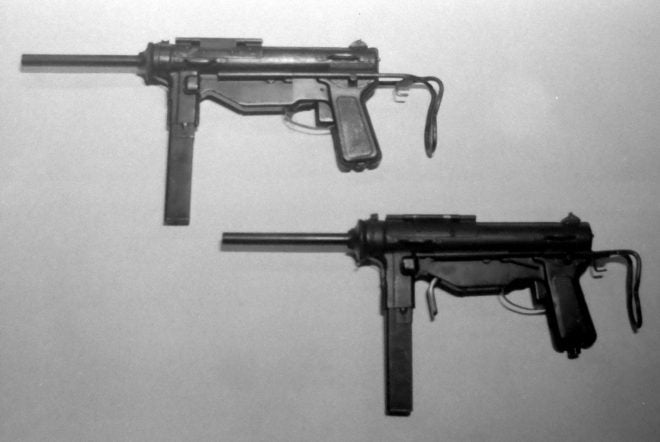Forgotten Weapons’ recent video on the M3 and M3A1 “Grease Guns” (https://www.thefirearmblog.com/blog/2017/04/19/forgotten-weapons-covers-well-remembered-grease-guns/) briefly mentioned the conversion kits built in limited numbers – 500 or so, Ian says – to make the .45 ACP submachine guns capable of firing 9x19mm rounds when eventually (but, I think, rarely) needed. This prompted me to recall that much larger numbers of clones of the U.S. weapon were actually factory-made in that caliber… but in Argentina. The whole thing began in the early fifties when State-owned Fábrica Militar de Armas Portátiles -“Domingo Matheu”, in Rosario, Santa Fé Province, acquired from the U.S. Government production rights for the M3A1, which was extensively demonstrated in that country in October, 1950.
I was once told, in a visit to FMAP-“DM” in the early 1990s, that the agreement somehow did not include the full transfer of technical production drawings, a problem that was eventually solved by three Italians by the names of Bergonzi, Ruggieri and Sustercic who had previously worked in a gun factory in Brescia, Italy: they simply reverse-engineered the design and soon came up with the necessary construction drawings. Actual production, however, took some more time, this only starting in 1954 with the P.A.M.1 (Pistola Ammetralladora, First Model). This was, in essence, the same American M3A1, the one with the cocking action being carried out with a finger of the shooter in a bolt orifice pulling it back through the open ejection cover. Production figures for this type, to my knowledge, are only approximate, and appear to vary between 24,000 and to as many as 34,600 guns in the 1954-1961 period.
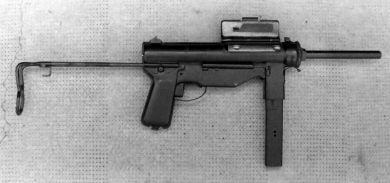
At first glance undistinguishable from a typical M3A1, a closer look at the P.A.M.1 will reveal that a flip-type (50-100m) rear sight is used rather than the original fixed aperture. When closed, the ejection window cover locked the bolt either in the forward or the cocked position.
Safety problems, however, made FMAP-“DM” modify the design significantly with the addition of a prominent grip safety lever aft of the magazine housing, as the locking feature of the ejection window cover was prone to failures. This resulted in the P.A.M.2 model, basically consisting of “1” guns modified accordingly. This is believed to have totaled about 16,500 guns converted in the 1963-72 period. The number of weapons to have left the factory already as P.A.M.2s is generally given as 1,100.
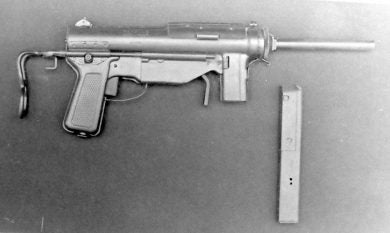
The P.A.M.2 featured a grip safety lever at the rear of the magazine housing that had to be pressed forward to allow the bolt to move, thus avoiding the typical accidental discharges of many blowback SMGs. Note two small “ammo-inspection” orifices (dirt entrances?) on side of the 30-round magazine.
The Argentine “Grease Guns” remained in service with the local Army, Navy, Air Force and Police agencies for quite some time, examples having been seen in use during the Falklands/Malvinas War in 1982. Converted, semi-auto-only variants were available in the local civil market in the 1990s, as well as some deactivated guns.
P.A.M.1/P.A.M.2 Specifications:
Length, overall: 725mm; length, stock retracted: 535mm; barrel length, 200mm; empty weight: 3.3kg; cyclic rate of fire: 450 rounds/min.
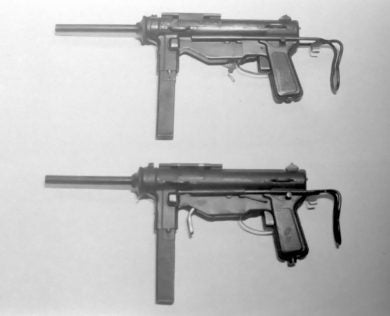
Side-by-side view of the P.A.M.1 (top) and the P.A.M.2, most of which were converted from the first model.

The P.A.M.1 with the wire stock fully extended and ejection window closed.
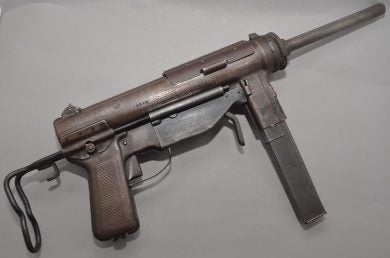
PAM 06:
A deactivated P.A.M.2 commercially sold in Argentina. (Image source: http://1982militariaforum.forumcommunity.net/?t=58151590)

P.A.M.2s in the hands of Argentine Army soldiers.

An Argentine Navy combat diver posing with his P.A.M. (1 or 2?).
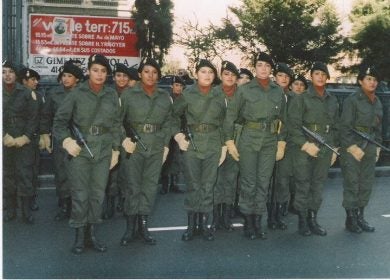
Some Gendarmeria Nacional Argentina (the National Police) female officers armed with M.P.A.s in a military ceremony.

A British Para takes a look at a P.A.M.2 captured in the Malvinas/Falklands War in 1982. Most weapons in the background are Argentine FALs, also made by FMAP-“DM”.
 Your Privacy Choices
Your Privacy Choices
